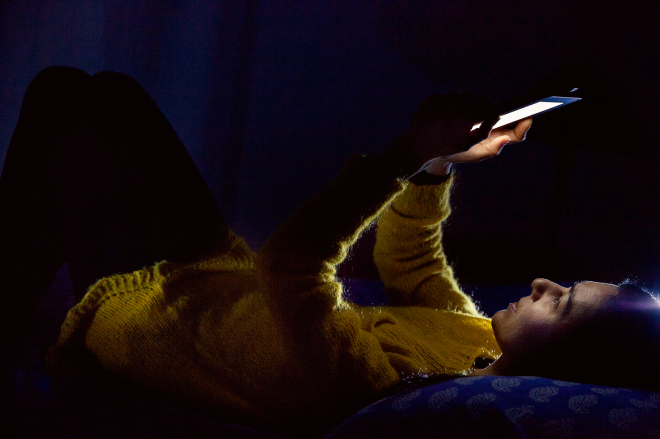
For more than 3 billion years, life on Earth was governed by the cyclical light of sun, moon and stars. Then along came electric light, turning night into day at the flick of a switch. Our bodies and brains may not have been ready.
A fast-growing body of research has linked artificial light exposure to disruptions in circadian rhythms, the light-triggered releases of hormones that regulate bodily function. Circadian disruption has in turn been linked to a host of health problems, from cancer to diabetes, obesity and depression. “Everything changed with electricity. Now we can have bright light in the middle of night. And that changes our circadian physiology almost immediately,” says Richard Stevens, a cancer epidemiologist at the University of Connecticut. “What we don’t know, and what so many people are interested in, are the effects of having that light chronically.”
Stevens, one of the field’s most prominent researchers, reviews the literature on light exposure and human health the latest Philosophical Transactions of the Royal Society B. The new article comes nearly two decades after Stevens first sounded the alarm about light exposure possibly causing harm; writing in 1996, he said the evidence was “sparse but provocative.” Since then, nighttime light has become even more ubiquitous: an estimated 95 percent of Americans regularly use screens shortly before going to sleep, and incandescent bulbs have been mostly replaced by LED and compact fluorescent lights that emit light in potentially more problematic wavelengths. Meanwhile, the scientific evidence is still provocative, but no longer sparse.
As Stevens says in the new article, researchers now know that increased nighttime light exposure tracks with increased rates of breast cancer, obesity and depression. Correlation isn’t causation, of course, and it’s easy to imagine all the ways researchers might mistake those findings. The easy availability of electric lighting almost certainly tracks with various disease-causing factors: bad diets, sedentary lifestyles, exposure to they array of chemicals that come along with modernity. Oil refineries and aluminum smelters, to be hyperbolic, also blaze with light at night.
Yet biology at least supports some of the correlations. The circadian system synchronizes physiological function—from digestion to body temperature, cell repair and immune system activity—with a 24-hour cycle of light and dark. Even photosynthetic bacteria thought to resemble Earth’s earliest life forms have circadian rhythms. Despite its ubiquity, though, scientists discovered only in the last decade what triggers circadian activity in mammals: specialized cells in the retina, the light-sensing part of the eye, rather than conveying visual detail from eye to brain, simply signal the presence or absence of light. Activity in these cells sets off a reaction that calibrates clocks in every cell and tissue in a body. Now, these cells are especially sensitive to blue wavelengths—like those in a daytime sky.
But artificial lights, particularly LCDs, some LEDs, and fluorescent bulbs, also favor the blue side of the spectrum. So even a brief exposure to dim artificial light can trick a night-subdued circadian system into behaving as though day has arrived. Circadian disruption in turn produces a wealth of downstream effects, including dysregulation of key hormones. “Circadian rhythm is being tied to so many important functions,” says Joseph Takahashi, a neurobiologist at the University of Texas Southwestern. “We’re just beginning to discover all the molecular pathways that this gene network regulates. It’s not just the sleep-wake cycle. There are system-wide, drastic changes.” His lab has found that tweaking a key circadian clock gene in mice gives them diabetes. And a tour-de-force 2009 study put human volunteers on a 28-hour day-night cycle, then measured what happened to their endocrine, metabolic and cardiovascular systems.
 Click to Open Overlay Gallery
Click to Open Overlay Gallery Scheer et al./PNAS
Scheer et al./PNASCrucially, that experiment investigated circadian disruption induced by sleep alteration rather than light exposure, which is also the case with the many studies linking clock-scrambling shift work to health problems. Whether artificial light is as problematic as disturbed sleep patterns remains unknown, but Stevens thinks that some and perhaps much of what’s now assumed to result from sleep issues is actually a function of light. “You can wake up in the middle of the night and your melatonin levels don’t change,” he says. “But if you turn on a light, melatonin starts falling immediately. We need darkness.” According to Stevens, most people live in a sort of “circadian fog.”
Just how much health risk can be attributed to artificial light rather than sleep disruption? If breast cancer rates jump 30 percent in women who work at night, and prostate cancer rates nearly triple in men, what proportion of that circadian disruption comes from artificial light rather than sleep cycle problems? And just how much blue light must be absorbed before things get risky: a few minutes a night or a few hours, a few years or a few decades? These are now pressing research questions, yet it may be difficult to know for sure, says Stevens. Conclusively settling the matter would likely require studies both rigorously controlled and terribly unethical. In the meantime, it might make sense to let a little nighttime back into your life.
